RAIL Memorial Project holds somber ceremony near Swannanoa Tunnel
Dedication of plaque and boulder remembers tragic cost of railroad
Fred McCormick
The Valley Echo
October 22, 2023
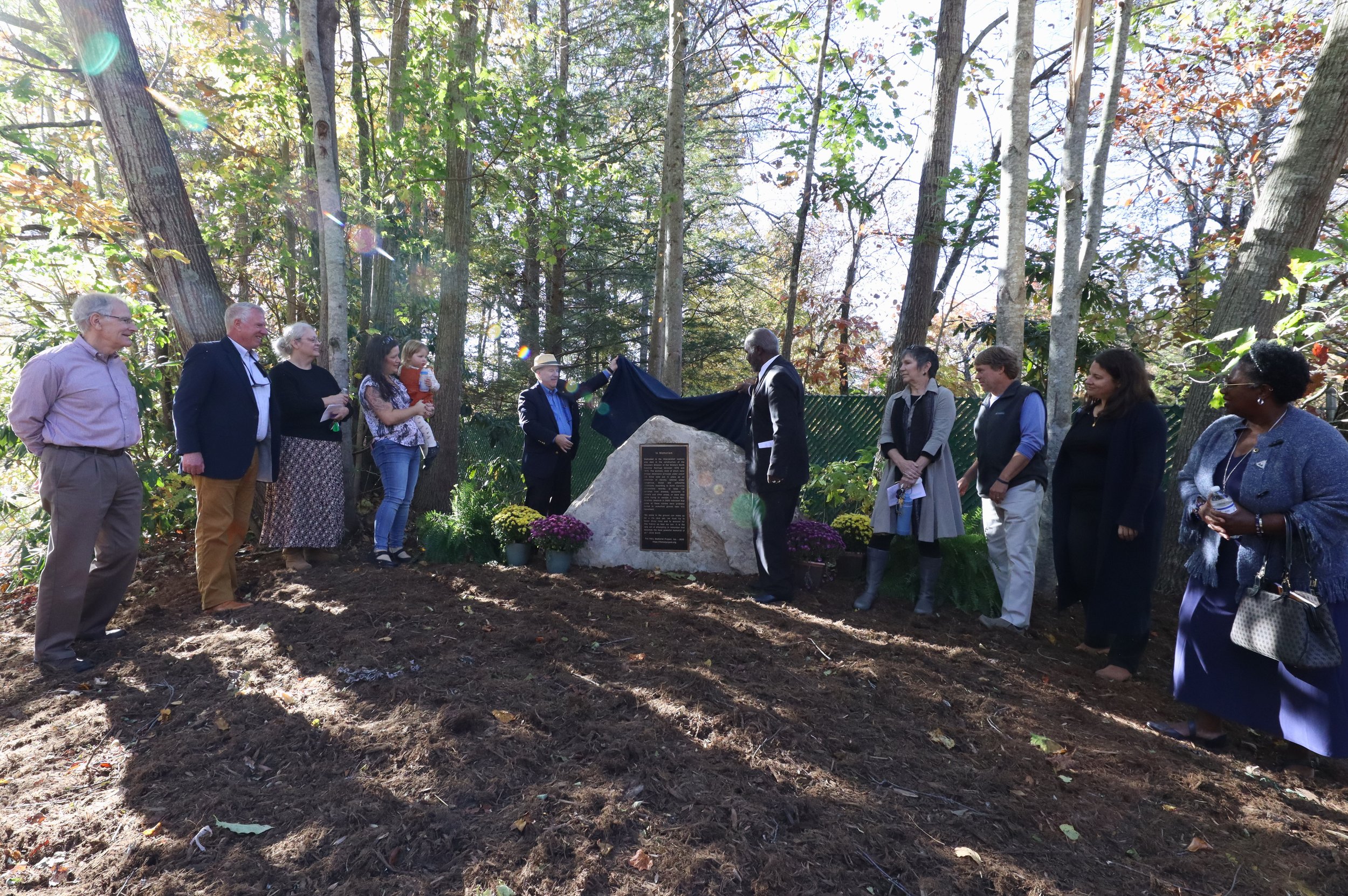
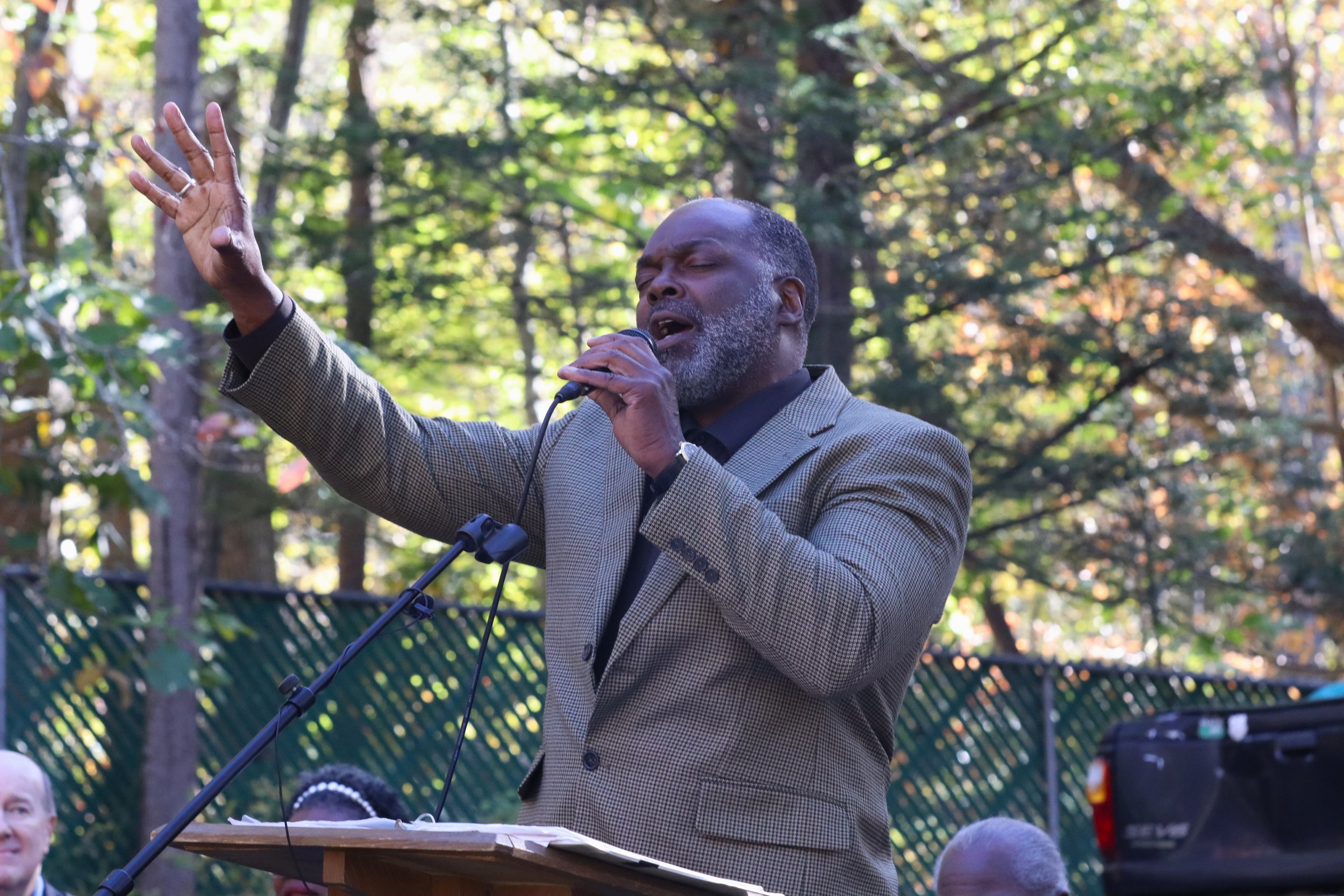
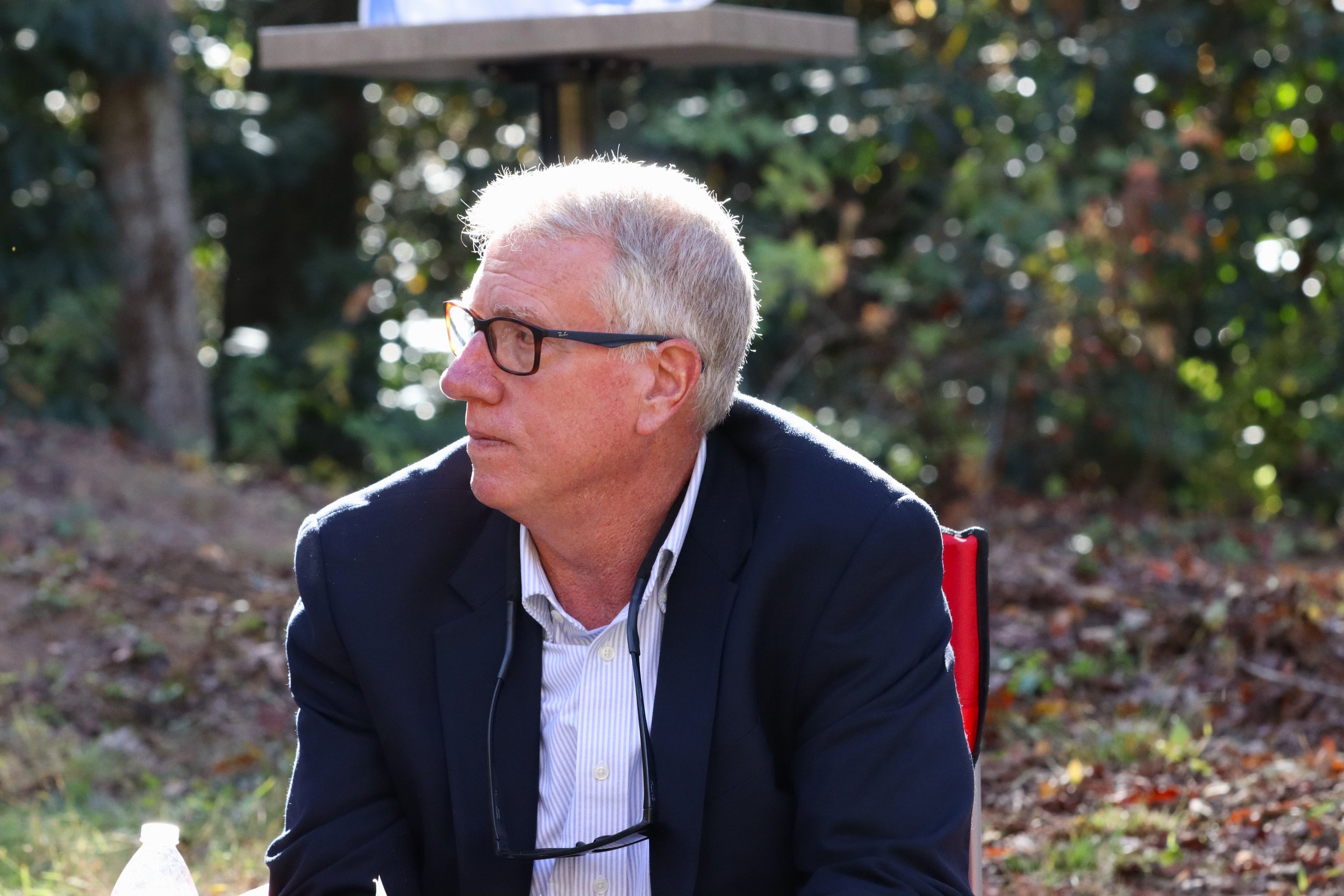
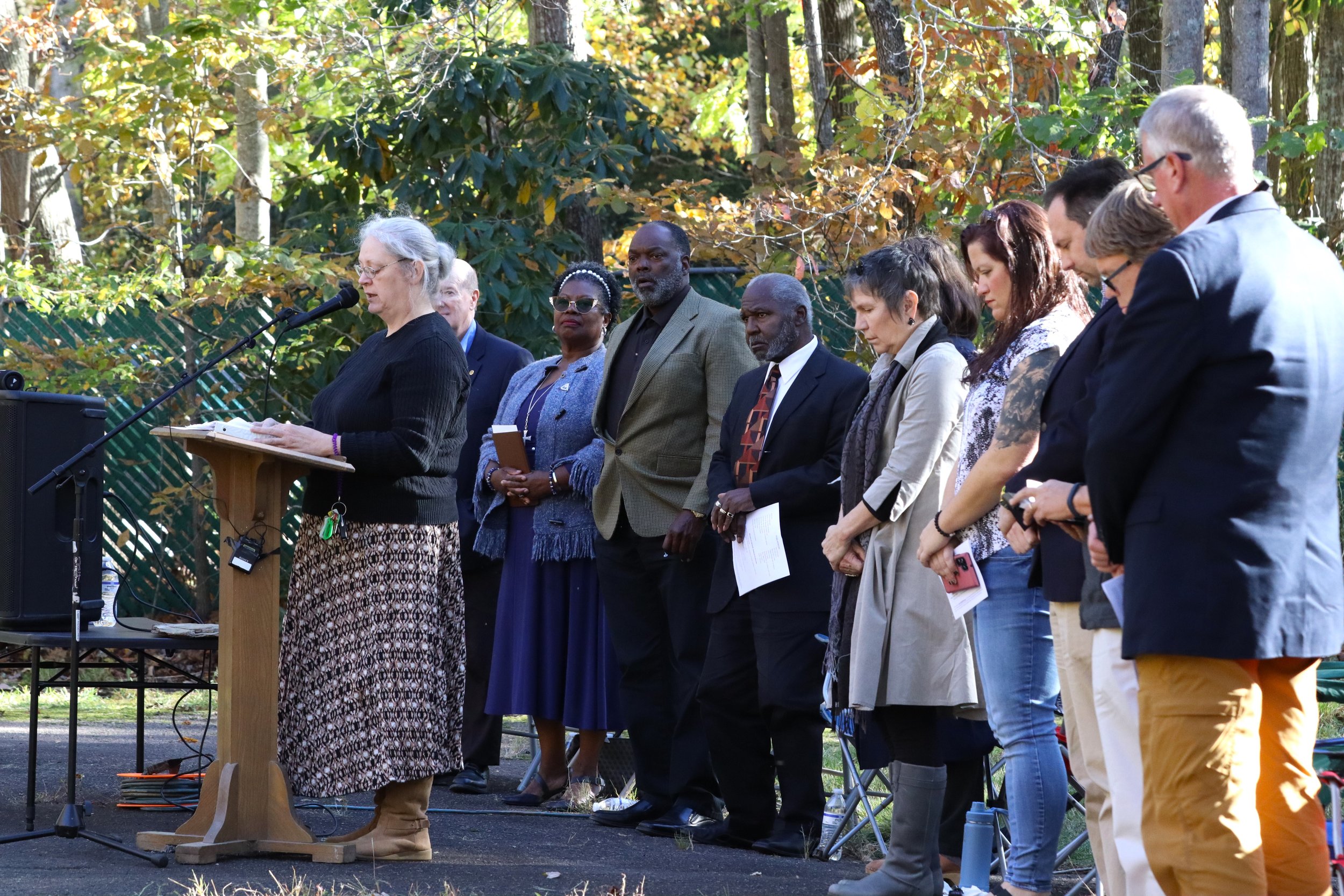
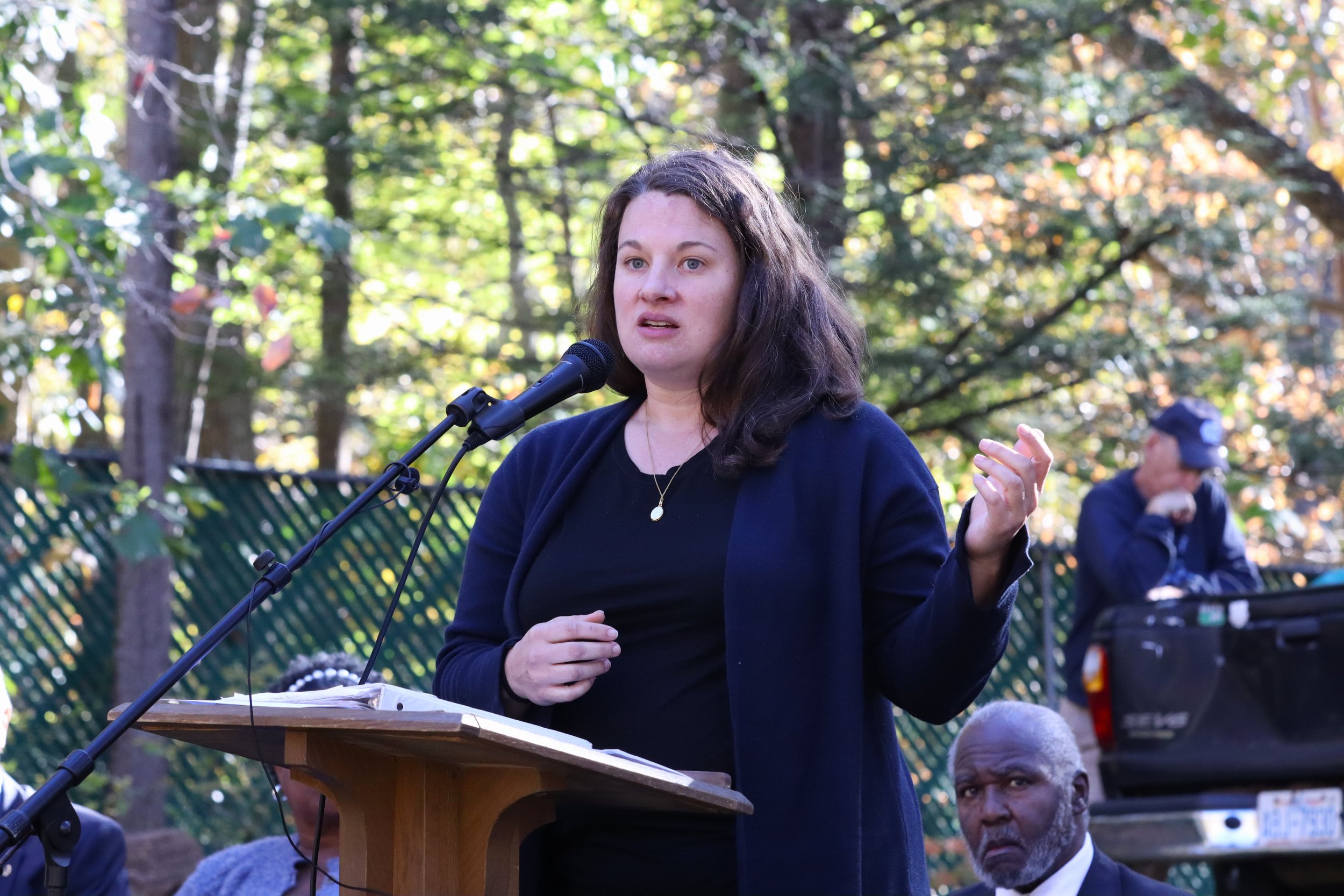
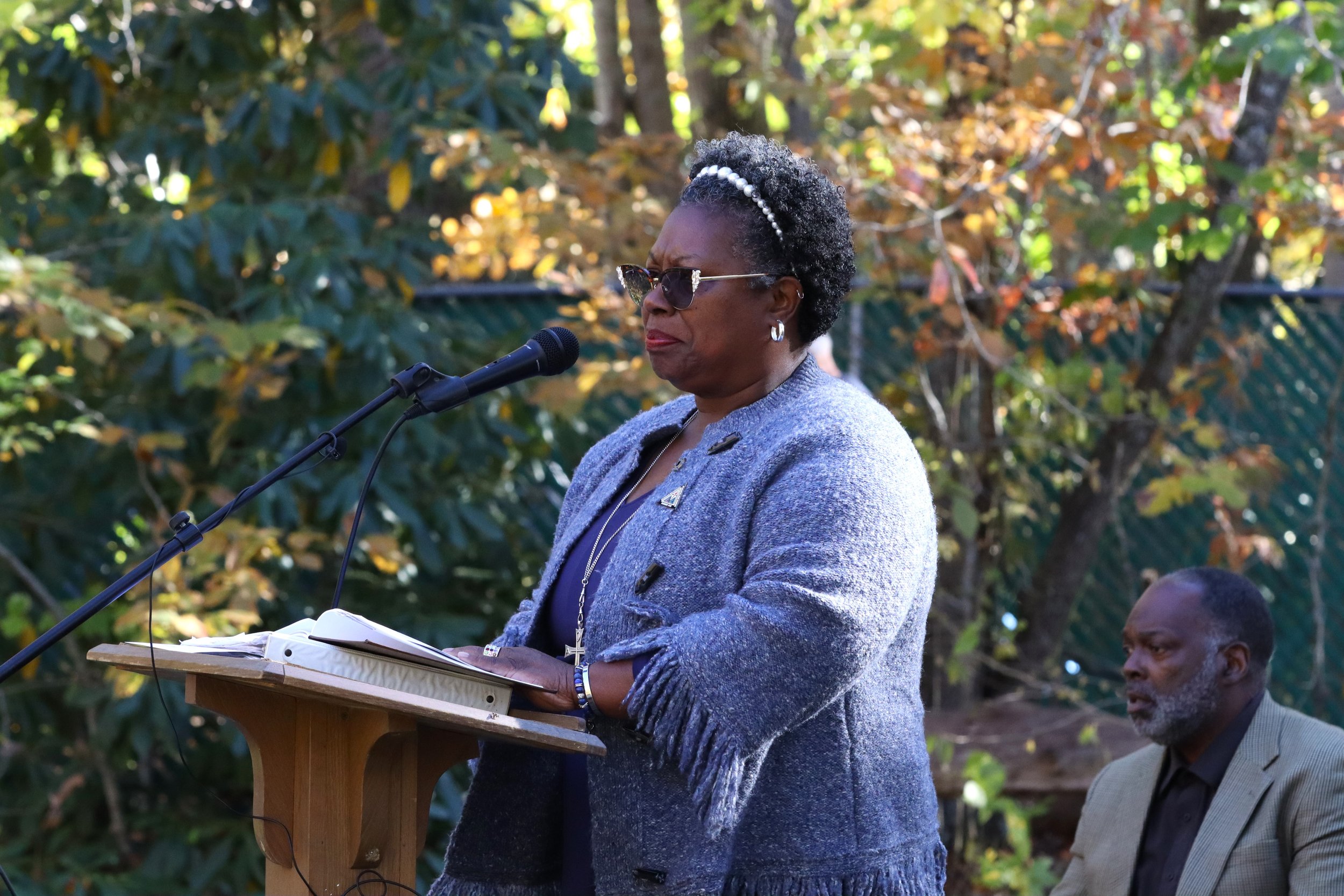

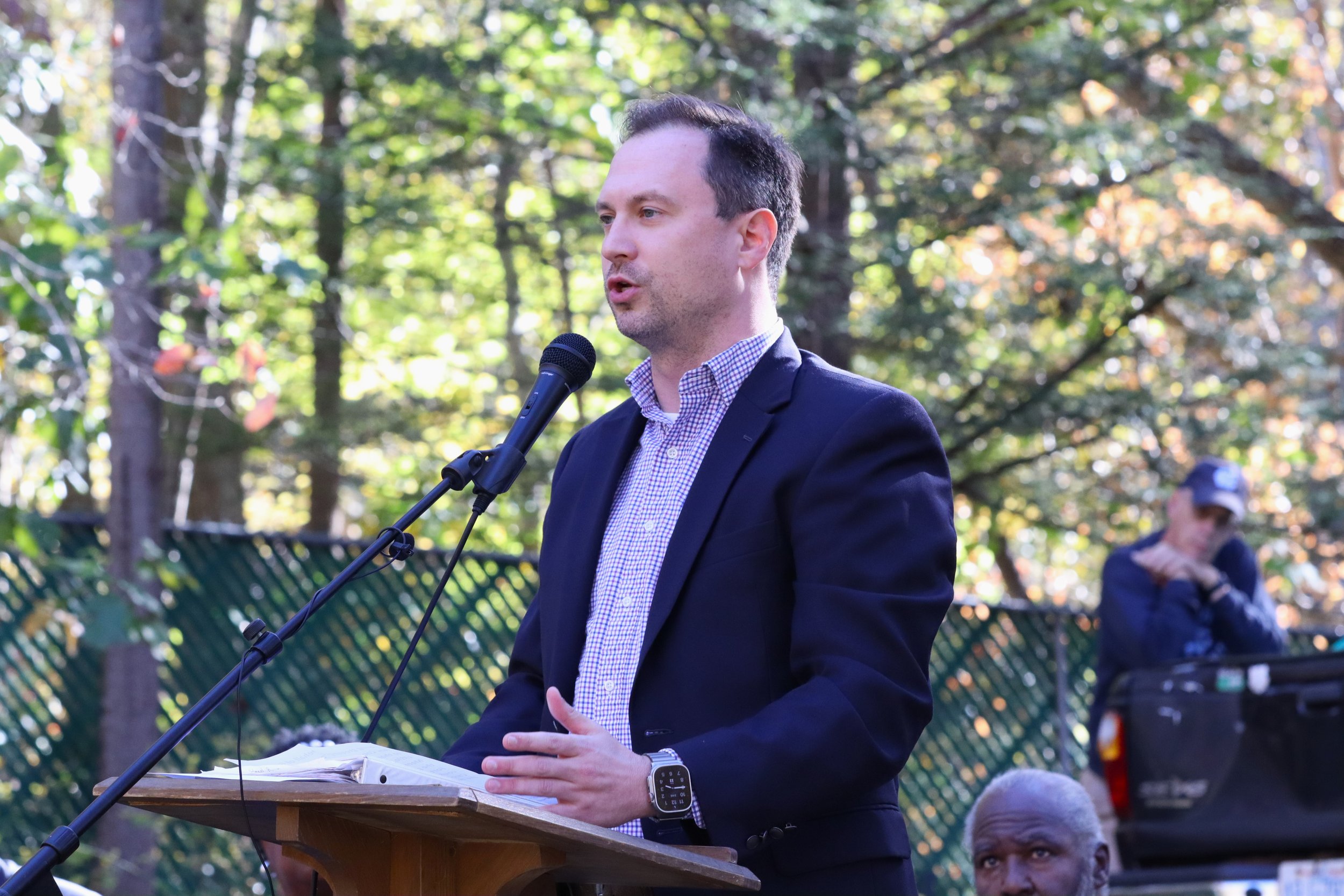

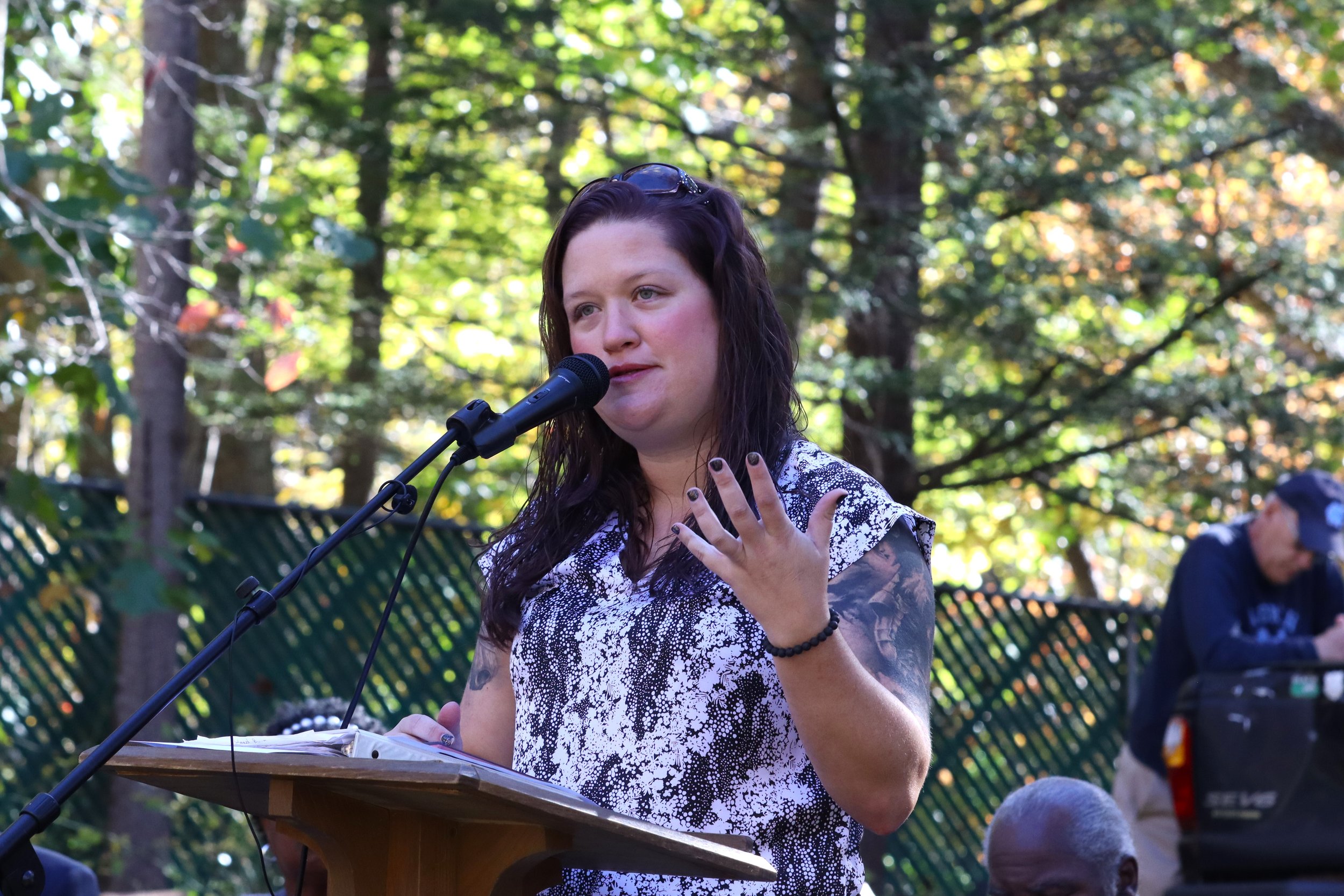
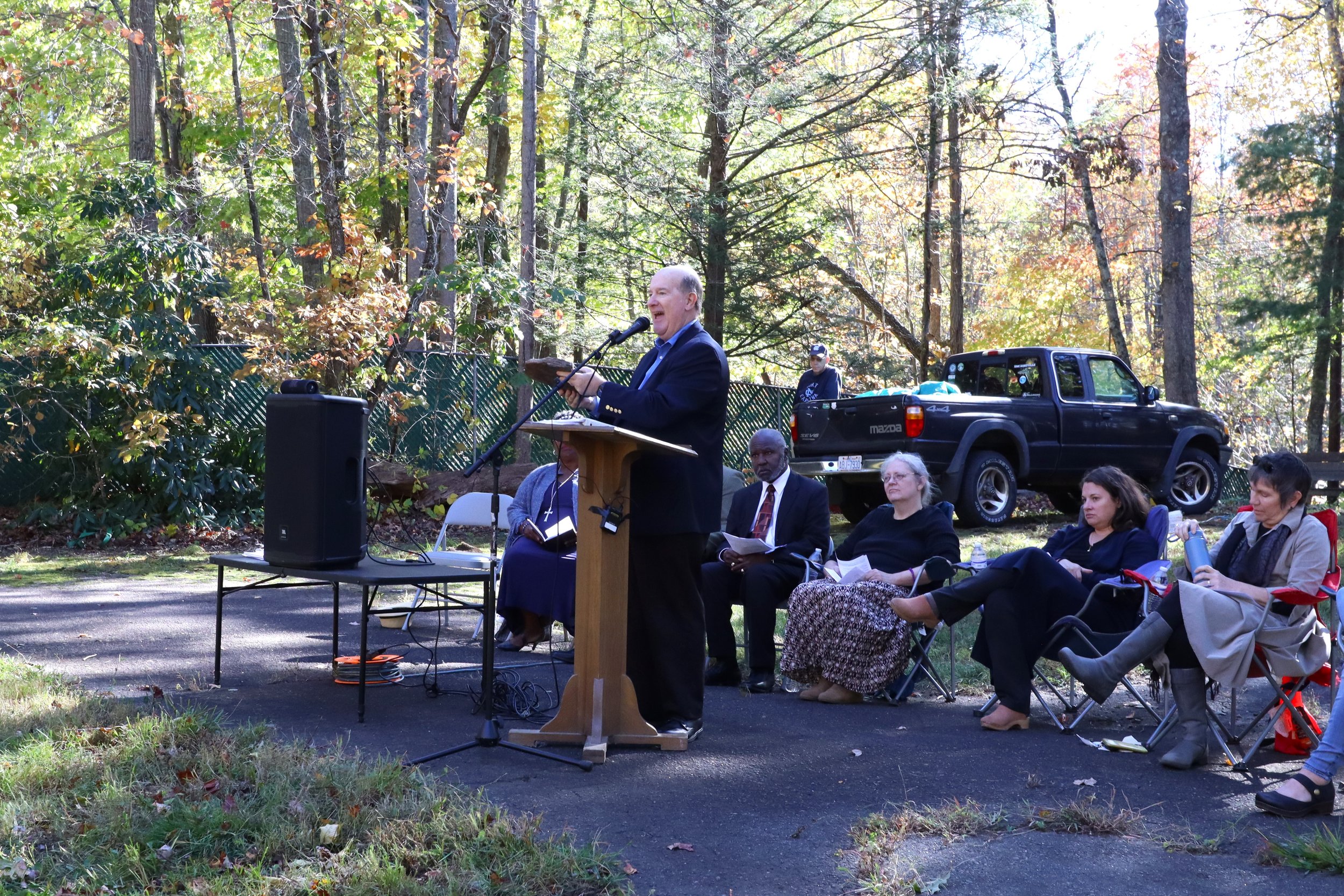
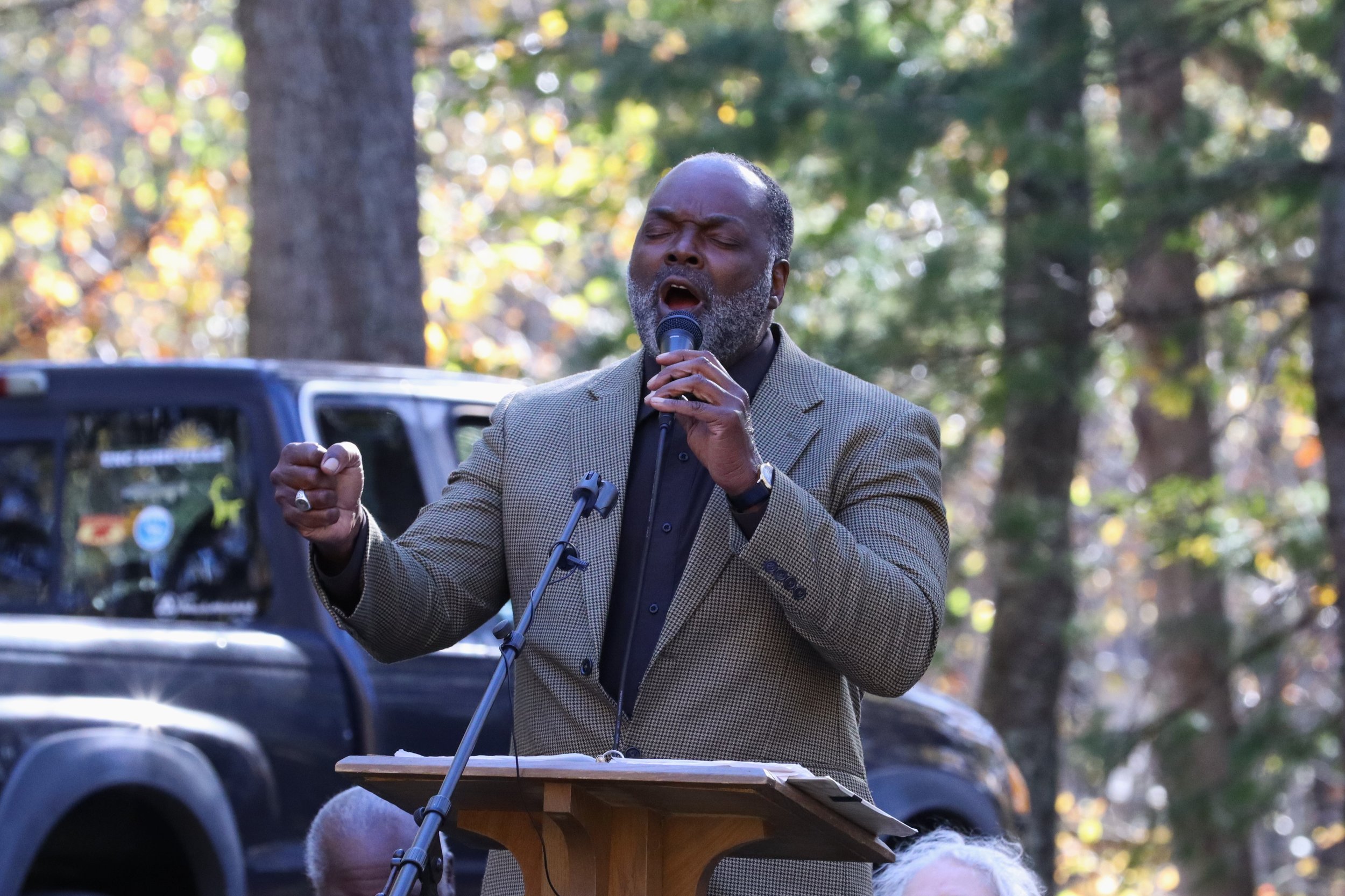
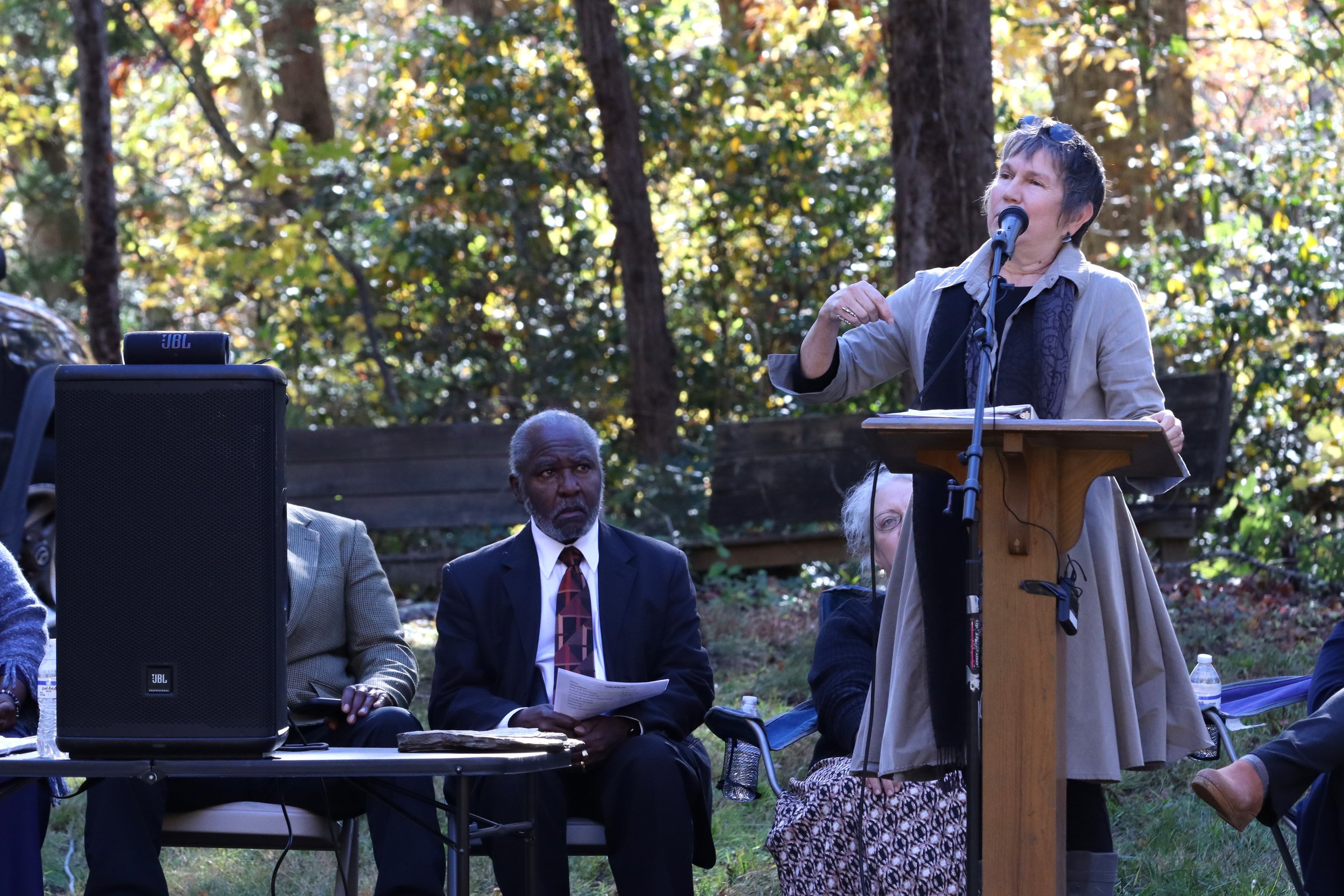

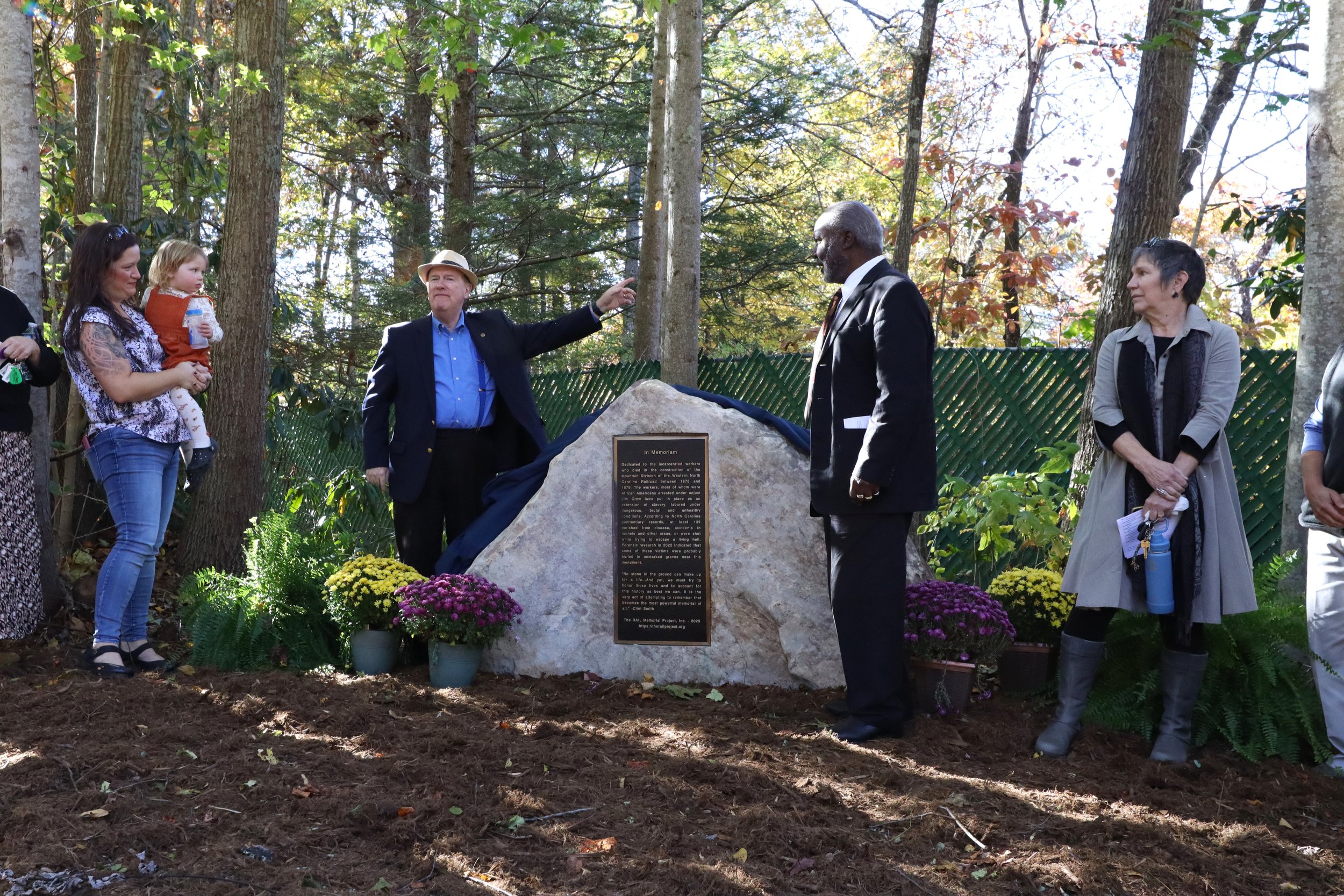
Surrounded by vibrant fall colors on an open field in Ridgecrest, Oct. 22, a crowd of people settled into camping chairs and on blankets spread around a small podium and loudspeaker. Here, less than 200 feet from an unmarked mass grave, attendees joined the RAIL Memorial Project to mourn and remember the countless incarcerated laborers who perished while bringing the railroad up the steep grade of the Swannanoa Gap.
The ceremony, attended by local elected leaders and the director of the Governor’s Western Office, concluded with the unveiling of a plaque and boulder memorializing the mostly African American prisoners buried along the tracks.
The RAIL Memorial Project began in 2020 with the goal of raising awareness of the nearly forgotten story of the construction of the Mountain Division of the Western N.C. Railroad, between 1875-1879. The project, which would connect the isolated mountain region with the growing economy of the east , was “the largest thing that could have happened” for mountain residents in the years immediately after the Civil War, according to Marion Mayor Steve Little, who has been researching the subject for decades.
Little and UNC Asheville history professor Dr. Dan Pierce formed RAIL in 2020 to remember the laborers who were forced to build the railroad under brutal conditions. The nonprofit organization, which now includes 10 members on its board of directors, erected a monument near Andrews Geyser in Old Fort in October of 2021.
“The state bought the railroad 10 years after the Civil War, but the war had killed so many men and boys that there was essentially no work force,” Little said, detailing the history of the project, which reached Buncombe County by way of the 1,872-foot long Swannanoa Tunnel in Ridgecrest in March of 1879. “If the state wants to build this railroad, how are they going to do it? Who are they going to hire to build it, and where will they get the money to pay? One solution to both problems: they went to the N.C. penitentiary to get that labor, and they paid them nothing to do it. It was less expensive for the system to house them on the side of this mountain than it was in Raleigh.”
The first of around 3,000 inmates, nearly all of them formerly enslaved and many convicted of petty crimes, began arriving at Henry Station in Old Fort in 1875. While the location of the first stockade is just over three miles away from the site of Sunday’s gathering, it rests approximately 1,100 feet below. The Mountain Division of the WNC Railroad was tasked with building nearly eight miles of track, looping a total of 2,700 degrees around mountain terrain, to negotiate the steep incline, cutting six tunnels through the rugged landscape along the way.
“The state was broke, and they had some sledge hammers and some shovels and some saws, but the primary tool the convicts used was something they had to find on the ground — a flat rock,” Little said. “The convicts had to find their own.”
The work was back-breaking and ceaseless, resulting in the deaths of a still unknown number of incarcerated laborers, according to RAIL Project Treasurer and WNC Historical Association Executive Director Anne Chesky.
“We know, from prison records, approximately 450 people died building this railroad into WNC,” she said. “We know around 77 of them died in escape attempts, and the rest of them died from malnutrition or disease. There are probably quite a few more deaths associated with this project.”
While the Old Fort memorial recognizes the prisoners who worked on the railroad, the Ridgecrest boulder remembers those who lost their lives. With newly acquired records from the state, RAIL plans to continue its work, telling the stories of the incarcerated laborers.
“We hope to give, not only names, but stories to these individuals, to write their obituaries,” Chesky said. “We want to help remember them not just as a composite character, but fully formed human beings who shaped our history.”
Some of those men were carelessly buried in a mass grave, identified by RAIL in 2021 through ground penetrating radar and the use of cadaver dogs. The site corroborates an oral history of the collapse of the Swannanoa Tunnel.
“According to oral history, which I believe is accurate, right there was a rumbling sound, just as the Salisbury locomotive was backing in with empty cars to be filled with rocks,” Little said, pointing to his left. “A rumble, and then a quick crash. Rock fell in, and approximately 19 convicts and one guard were crushed to death.”
As the bodies were recovered, surviving laborers were told to quickly dig a hole just south of the tunnel portal, he continued.
“We are within 100 feet of where that hole was dug,” Little said. “Those humans were just tossed in a hole, and it was covered up.”
RAIL researchers learned of the possible location of a “Ridgecrest convict cemetery” from a longtime resident. The fate of those prisoners likely mirrors that of many of their peers, according to author and retired N.C. State University professor Cat Warren.
“Using human remains detection dogs and GPR we were able to get a sense of where some remains might be,” she said. “But, the entire railroad track is a graveyard.”
Drew Christy, director of the Governor’s Western Office, read a statement on behalf of Roy Cooper.
“Governor Roy Cooper would like to thank Dr. Dan Pierce, Mayor Steve Little and all the members of the RAIL Memorial Project who helped shed light on the people who built the railroad up Old Fort Mountain, so goods and services could travel up to WNC, and so WNC could be connected to the rest of the state. This dedication today highlights the importance of those who were incarcerated, mostly former slaves, who died while building that railroad through the mountains.”
Presenters RoAnn Bishop, director of the Mountain Gateway Museum in Old Fort, Jeff Futch, regional supervisor of the N.C. Department of Natural and Cultural Resources and Jim Stokely, president of the Wilma Dykeman Legacy, read a list of names of incarcerated laborers known to have perished during the construction of the railroad.
Reverend Mary Scott followed with a prayer, as Greg Conley closed the ceremony, which was attended by Black Mountain Town Council Members Pam King and Alice Berry, with a stirring performance of Amazing Grace.
The memorial boulder, which represents the tragic deaths of so many incarcerated laborers and located on Yates Avenue, contains a quote that became a motto for RAIL in the years since its launch, according to Pierce.
“No stone in the ground can make up for a life… And yet, we must try to honor those lives and to account for this history as best we can,” reads the words of writer, poet and scholar Clint Smith. “It is the very act of attempting to remember that becomes the most powerful memorial of all.”
Photos of the RAIL Memorial Project dedication ceremony for the memorial plaque and boulder can be viewed in the gallery at the top of the page. For more information about the RAIL Memorial Project, or to donate to the nonprofit organization, visit therailproject.org.
